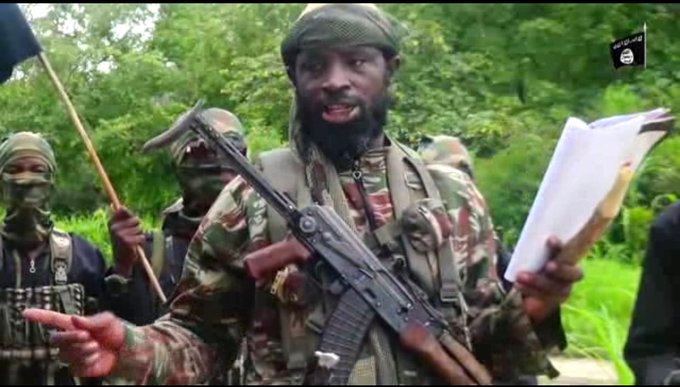How ISWAP used women and teenagers to destroy Shekau
Women and teenagers were among the fighters who confronted Abubakar Shekau, leader of the Boko Haram sect, in one of the toughest battles of his life. Sources in the know of the offensive told Daily Trust that the Islamic State in West Africa Province (ISWAP) used fighters between the ages of 12 and 30. How […]

Women and teenagers were among the fighters who confronted Abubakar Shekau, leader of the Boko Haram sect, in one of the toughest battles of his life.
Sources in the know of the offensive told Daily Trust that the Islamic State in West Africa Province (ISWAP) used fighters between the ages of 12 and 30.
- How 300 Libya-trained ISWAP fighters ‘conquered’ Shekau
- ISIS won’t get $7m bounty placed on Shekau, says US
Both sides were said to have suffered casualties in the battle but Shekau’s camp recorded more loss as the brutal leader reportedly killed himself or sustained severe injuries which made his chances of survival minimal.
The ISWAP fighters were said to have been trained in Libya, Somalia and other countries abroad.
They were said to have planned very well for the offensive against the man who has led his camp with brutality for years.
“They {the fighters} are actually children of some ISWAP members killed over time,” one of the sources said.
“Others are youths sourced during raids on multiple islands around the Lake Chad. The ISWAP carefully selected the youths. It was therefore much easier for recruitment as some of the youths willingly joined the group and others were forcefully conscripted.
“Some of them were born during the wartime and others were very young when their parents joined the group around 2002. After their parents died because of illness or confrontation with Nigerian troops, the children naturally took over and when the group split into two in 2016, those that moved on their own or forcefully taken to the shores of Lake Chad under the umbrella of ISWAP had an upper hand in terms of training because they were taken to Libya for training in guerrilla warfare and other purposes.
“Others were sent to Syria and Somalia… They were taken to many countries abroad for training. However, those that came back especially between March and April this year took active part in confronting Shekau in the last few days. They launched a serious offensive alongside other top commanders and fighters already on ground and they succeeded in taking over.
Another source said some of the 300 youths were trained as “medical doctors, paramedics, engineers, IT specialists, bomb specialists and mechanics.”
He added that among them were women “who serve as nurses or cooks while others have gun-handling skills, meaning they can partake in combat operations.”
